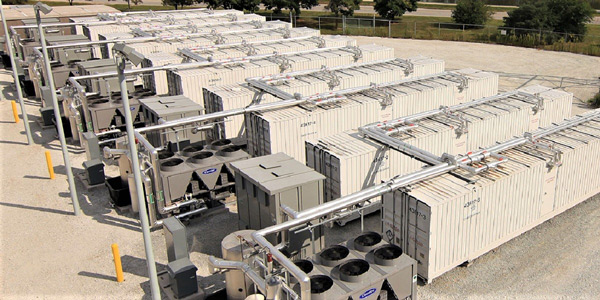By Amanda Durish Cook
CARMEL, Ind. — MISO’s Energy Storage Task Force will now add to its to-do list storage-related aspects of FERC’s recent rulemaking on generator interconnection procedures (Order 845).
The group said it will begin examining how MISO might need to alter provisions for energy storage interconnection to comply with the April 19 order, which prescribes more transparency and timeliness for RTOs’ large interconnection agreements.
The order is expected to remove even more barriers to storage interconnection, according to MISO stakeholders. It explicitly revises the definition of a generating facility to include storage, permits interconnection customers to apply for interconnection service lower than the capacity of their generating facility and requires transmission providers to provide interim interconnection agreements for limited operation of a generating facility prior to completion of the full interconnection process, among other rules. (See FERC Order Seeks to Reduce Time, Uncertainty on Interconnections.)
“There are plenty of decisions in that order that are going to be impactful to storage,” Energy Storage Task Force Chair John Fernandes said during an April 26 meeting.
Currently, there’s just under 500 MW of energy storage in various stages of MISO’s interconnection queue.
The task force began discussing the order after an April 25 conference call in which MISO’s Steering Committee agreed to allow the group to explicitly consider both Order 841 and Order 845 when identifying discussion topics to recommend to other stakeholder groups. (See Committee Ponders Expanded Role for MISO Storage Group.)
MISO executives at the meeting said they are still reviewing Order 845 to identify how the RTO will be required to alter the interconnection process.
Executive Director of Resource Planning Patrick Brown said FERC’s final order did not prescribe how to best model electric storage for the interconnection process, instead leaving storage modeling to be worked out between transmission providers and stakeholders.
Brown also noted the final order denied a request that energy storage be modeled as transmission assets in the interconnection process but said MISO is still determining whether the denial precludes storage from being treated as transmission.
“We’re going to have to talk with our legal team about this,” Brown said.
However, American Transmission Co.’s Bob McKee said he found nothing in the order preventing storage from being modeled as transmission.
“FERC is certainly still open to storage as a transmission asset,” McKee said.
“Storage as transmission, that’s kind of the next big thing in our industry to get FERC to make some rules around,” Fernandes said. “I still think FERC is giving the green light to go ahead and do this; they’re just not providing explicit rules yet.”
Brown also said MISO may have to make a few tweaks to allow for interconnection service with surplus capacity, although the RTO’s process for net-zero interconnection service requests could probably cover most of the directive.
“We believe that revisions to our net-zero provisions take care of that,” Brown said, while conceding that some of MISO’s net-zero rules may be too restrictive to meet FERC’s compliance.
However, Wind on the Wires’ Rhonda Peters said it’s too “cumbersome” for projects to line up for net-zero interconnection service because of the requirement that customers must already be in the queue and provide milestone payments before they’re able to respond to a request for proposal for net-zero service.
But Fernandes cautioned that while the Energy Storage Task Force could debate the interconnection queue as far as storage eligibility, queue improvements are the domain of MISO’s Interconnection Process Task Force (IPTF).
“This task force is not assigned queue reform,” Fernandes said.
Brown agreed a majority of work on Order 845 will be done at the IPTF. Fernandes said he would try to plan a joint conference call of the IPTF and the Energy Storage Task Force prior to mid-May to discuss how FERC’s order might make MISO’s queue process more storage-friendly.
Brown said some work to comply with Order 845 will come down to finding language already included in MISO’s business practice manuals and copying that language into the Tariff.
Some stakeholders asked if MISO would consider requesting an extension with FERC on the July compliance filing deadline for Order 845. Brown said MISO is judicious when requesting extensions, making sure it requests them only when necessary.
“It’s a fairly short lead time,” Brown conceded.
Process Holdup?
Stakeholders in attendance worried the July deadline would not provide enough time for the task force to identify Order 841/845 storage issues, then turn them over to the Steering Committee, which must then assign discussion to other stakeholder groups.
Customized Energy Solutions’ Ginger Hodge said she was becoming “increasingly concerned” that the formal process of identifying issues and sending them to the Steering Committee was creating a roadblock to getting proposals written and vetted in other stakeholder groups.
Hodge said she didn’t want the Steering Committee to become a place where “good ideas are quietly strangled.”




